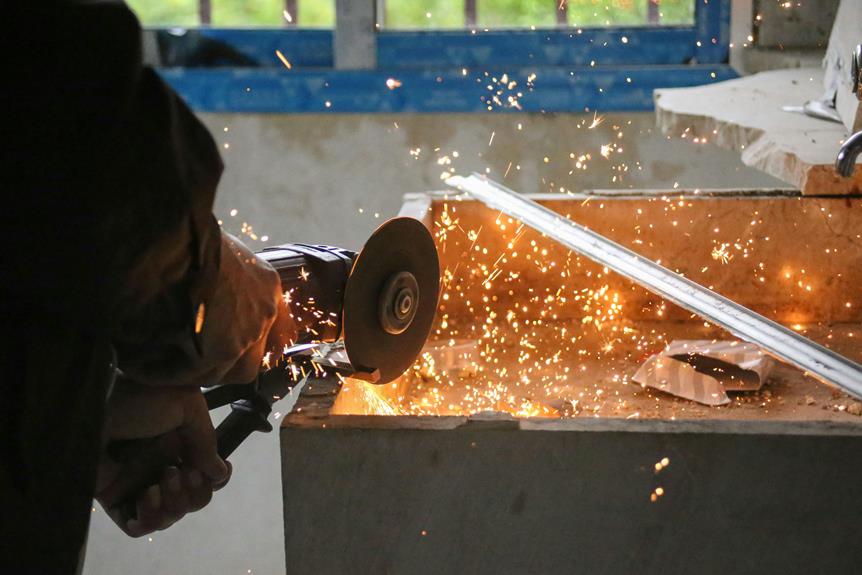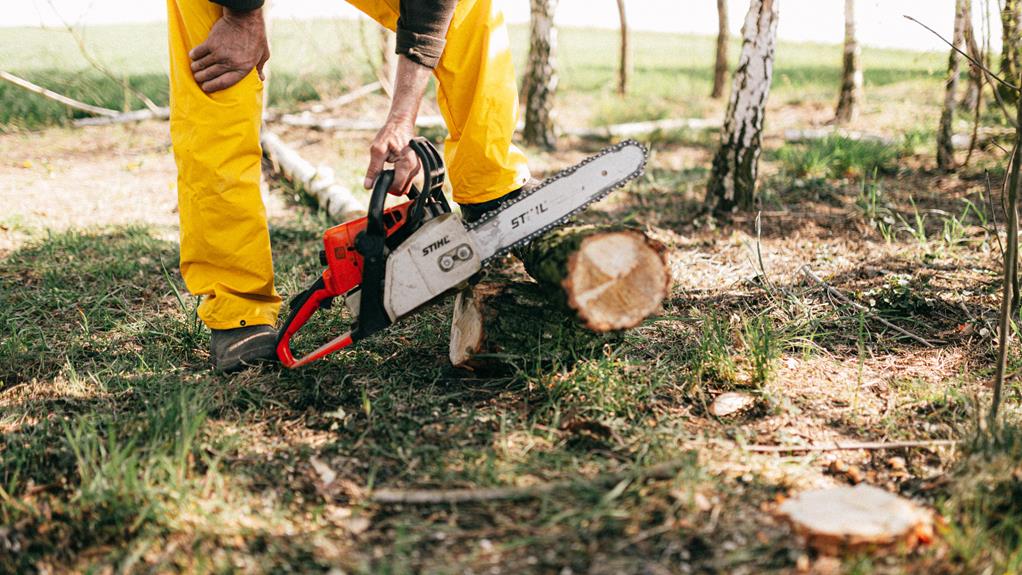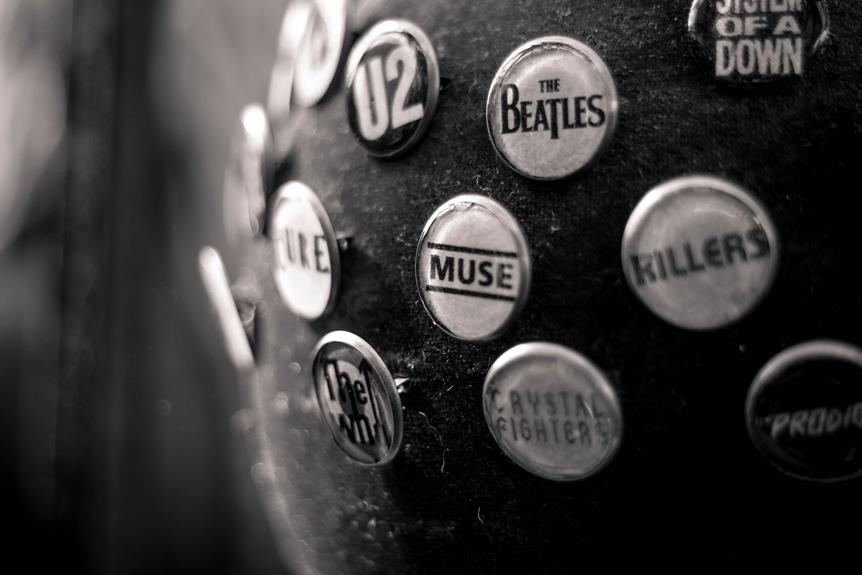When embarking on the search for an industrial grinder, it is imperative to meticulously consider various features that can significantly impact the performance and safety of the equipment. From horsepower capabilities to safety mechanisms, each component plays a crucial role in the grinder's efficiency and effectiveness.
However, beyond these fundamental aspects lie nuanced details that can make a substantial difference in the grinder's functionality. Exploring these subtleties can lead to a more informed decision-making process, ultimately resulting in the selection of an industrial grinder that aligns seamlessly with specific operational requirements and tasks.
Key Takeaways
- Choose an industrial grinder with at least 1-2 HP for power and torque.
- Select a grinder that meets your specific capacity and task requirements.
- Ensure the grinding wheel is suitable for the materials being ground.
- Prioritize safety features like guards and dust extraction systems for a safe work environment.
Power Considerations
When evaluating industrial grinders, it is crucial to prioritize power considerations by focusing on the horsepower rating to ensure optimal performance for challenging tasks. Industrial grinders with higher horsepower ratings deliver increased power and torque, essential for handling demanding grinding applications efficiently.
It is advisable to select a grinder with a minimum horsepower of 1 to 2 to meet most industrial needs effectively. Additionally, some models offer variable speed options, allowing users to adjust the grinding speed based on the task at hand, enhancing versatility and precision.
Capacity and Suitability
To ensure efficient operation in industrial settings, the next crucial aspect to consider after power requirements is the grinder's capacity and suitability for varying grinding tasks. When evaluating industrial grinders, the following factors related to capacity and suitability play a vital role:
- Motor Capacity: The motor capacity of the grinder determines its power output and ability to handle different grinding tasks efficiently.
- Material Compatibility: It is essential to choose a grinder that is compatible with the materials you will be grinding to ensure optimal performance and longevity of the equipment.
- Task Specificity: Select a grinder that meets the specific requirements of your grinding tasks to achieve desired results and enhance productivity.
Grinding Wheel Selection
The selection of an appropriate grinding wheel is crucial in optimizing the performance and efficiency of industrial grinders. When choosing a grinding wheel, consider factors such as wheel material and size selection.
The wheel material should be compatible with the materials being ground to ensure efficient results. Additionally, the size selection of the grinding wheel is essential; larger wheels are suitable for bigger jobs, while smaller wheels are sufficient for smaller tasks.
Ensure the selected wheel is designed to meet your specific grinding needs. Checking if the wheel is replaceable or adjustable for maintenance purposes can also contribute to the longevity of the grinder's performance.
It is imperative to select the right grinding wheel to achieve the desired grinding outcomes efficiently.
Safety Features to Look For
Enhancing industrial grinder safety entails prioritizing the incorporation of essential safety features to mitigate potential hazards and ensure a secure working environment. When looking for an industrial grinder, it is crucial to consider the following safety features:
- Built-in Guards and Emergency Stops: These features protect users from flying debris and provide a quick way to stop the grinder in case of an emergency, minimizing the risk of accidents.
- Dust Extraction Systems: Grinders equipped with dust extraction systems help reduce the release of dust particles into the air, creating a safer and cleaner working environment while also promoting respiratory health.
- Shock-Resistant Technology: This feature minimizes the risks of electric shocks, ensuring the safety of the operator during use and maintenance procedures.
Prioritizing these safety precautions and following proper maintenance tips will contribute to a safer work environment when operating an industrial grinder.
Quality Vs. Price
Considering the array of safety features crucial for industrial grinders, the discussion now shifts towards evaluating the balance between quality and price in the selection process.
When comparing industrial grinders, it is essential to conduct a value comparison based on performance analysis. While a higher price tag may indicate better quality and advanced features, it does not always guarantee optimal performance.
Conversely, opting for a lower-priced grinder might result in compromising on crucial functionalities. Therefore, it is imperative to strike a balance between quality and price by thoroughly assessing the grinder's specifications, durability, and overall performance.
Research Tips
When delving into research for industrial grinders, prioritize understanding key specifications and performance metrics to guide your selection process effectively. To assist in your research process, consider the following tips:
- Comparison Analysis: Conduct a thorough comparison of different grinder models, focusing on features like power, capacity, grinding wheel options, and safety features. This analysis will help you identify the grinder that best suits your needs and requirements.
- Market Trends: Stay updated on current market trends in industrial grinders. Understanding the latest advancements, popular features, and innovations can provide valuable insights into the best options available and help you make an informed decision.
- Customer Reviews: Explore customer reviews and feedback on various industrial grinder models. Real-world experiences can offer practical insights into performance, durability, and overall satisfaction with different products.
Choosing the Right Grinder
For optimal performance in industrial applications, selecting the appropriate grinder based on power, capacity, grinding wheel compatibility, and safety features is crucial. When choosing the right grinder, consider maintenance tips and durability to ensure long-lasting efficiency and productivity.
Opt for a grinder with sufficient horsepower, at least 1 to 2 HP, for challenging tasks. Match the grinder's capacity with the job requirements, selecting larger grinders for bigger projects and smaller ones for minor tasks. Pay attention to the grinding wheel selection, ensuring it is suitable for the materials being worked on and replaceable for maintenance purposes.
Prioritize safety features like guards and emergency stops to create a secure work environment and reduce risks. By carefully considering these factors, you can make an informed decision and choose an industrial grinder that meets all your needs effectively.
Frequently Asked Questions
Can Industrial Grinders Be Used for Sharpening Tools or Only for Grinding Materials?
Industrial grinders can be versatile tools suitable for both tool sharpening and material grinding. Their efficiency in providing precise sharpening or grinding results makes them a valuable asset in various industrial applications, ensuring optimal performance and functionality.
Are There Industrial Grinders That Are Specifically Designed for Wet Grinding Applications?
Industrial grinders with wet grinding efficiency cater to specialized applications. Versatile options exist, offering precision and performance. Select models designed for wet grinding tasks showcase adaptability, ensuring optimal results even in challenging environments.
How Important Is the Weight and Portability of an Industrial Grinder for On-Site or Mobile Use?
Weight and portability are crucial for on-site or mobile industrial grinder use. Heavy grinders are impractical for mobility and ease of transport, impacting efficiency. Lighter, portable models enhance flexibility and accessibility, ensuring operational convenience and versatility in various work environments.
Are There Specific Certifications or Standards to Look for When Purchasing an Industrial Grinder for Commercial Use?
When purchasing an industrial grinder for commercial use, prioritize safety regulations and quality assurance. Look for certifications like ANSI, OSHA compliance, and ISO standards. Consider performance standards and the environmental impact to ensure a reliable and efficient grinder.
What Are Some Common Maintenance Tips for Keeping an Industrial Grinder in Optimal Working Condition?
For maintaining an industrial grinder optimally, adhere to a regular lubrication schedule and inspect wear parts. Ensure blade sharpening adheres to safety precautions for longevity and efficiency. Diligent upkeep enhances performance and extends the lifespan of the equipment.
Conclusion
In the world of industrial grinders, the key features of power, capacity, grinding wheel selection, and safety are the pillars of efficiency and effectiveness.
Just as a well-oiled machine requires each component to function in harmony, a well-chosen grinder must possess these essential features to operate at its full potential.
By carefully considering these factors and conducting thorough research, individuals can ensure they select a grinder that meets their operational needs with precision and reliability.



























0